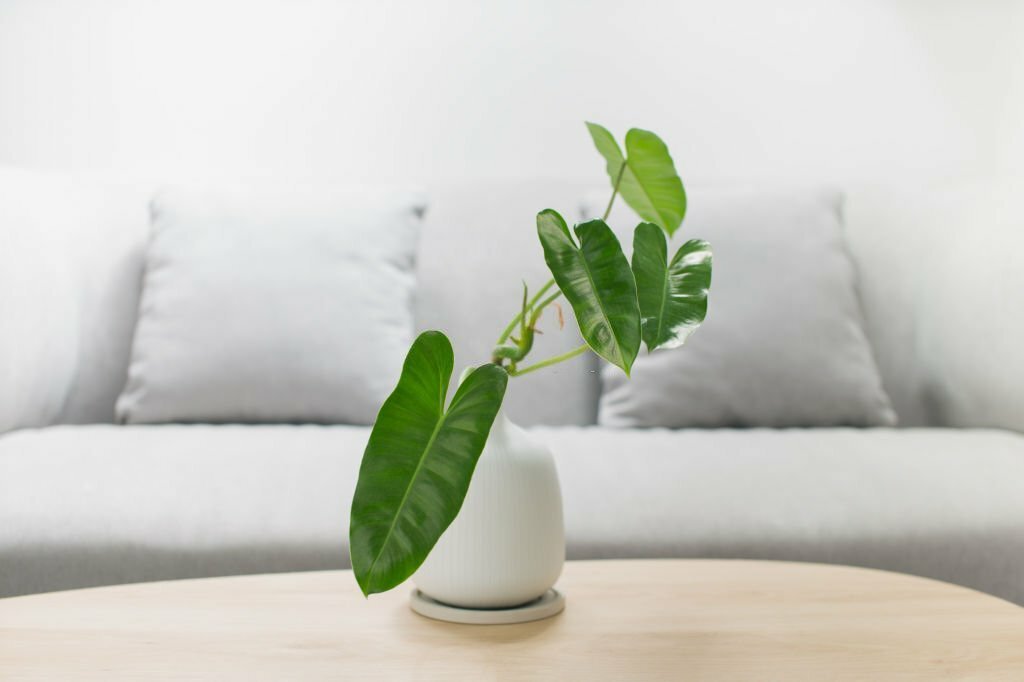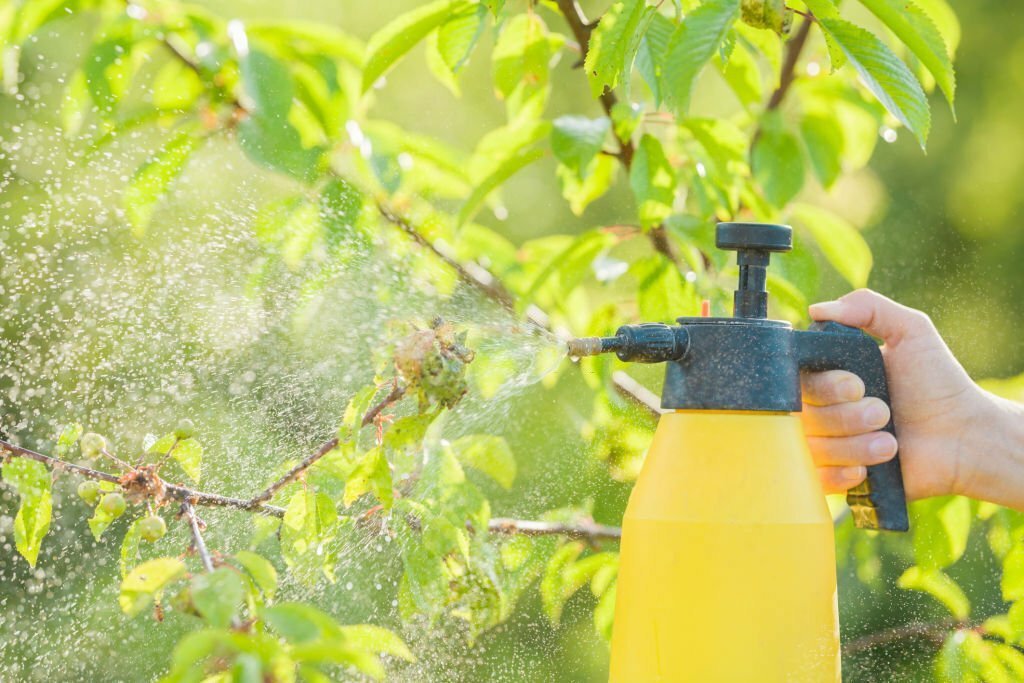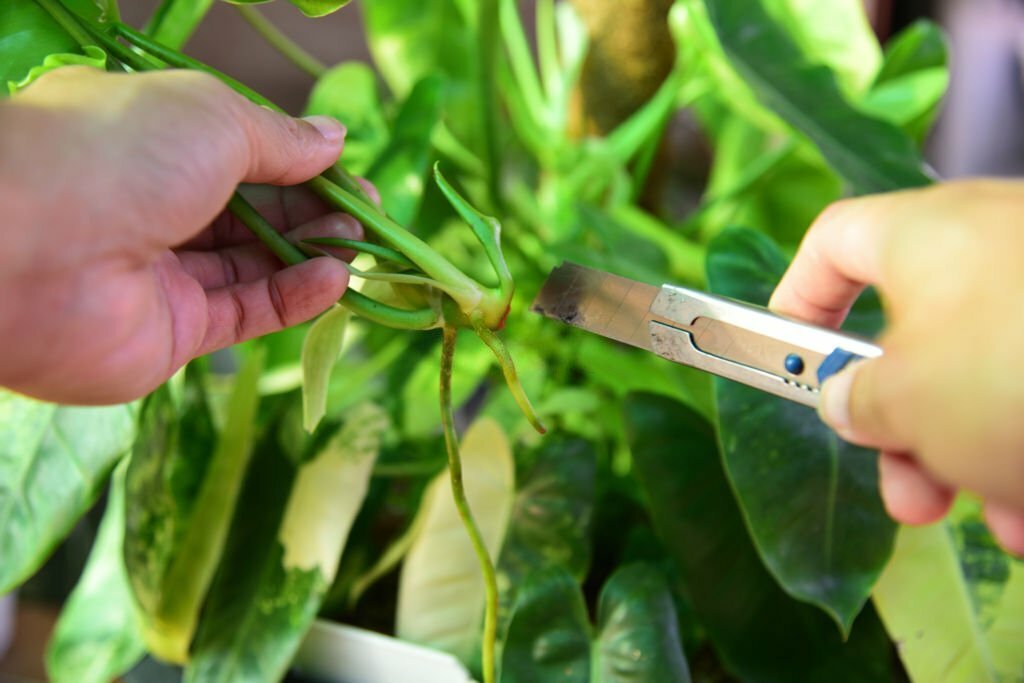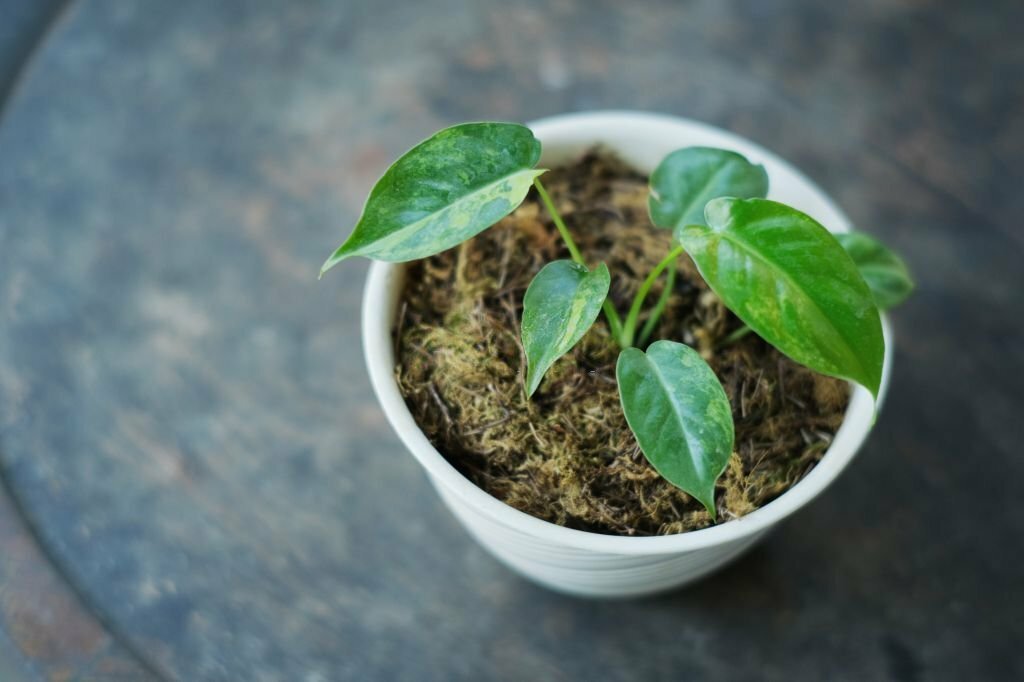Table of Contents
Complete Care Guide For Burle Marx Philodendron Houseplant
Philodendron burle marx is a tropical plant that has become a popular houseplant for many plant lovers. It is named after the famous Brazilian architect Roberto Burle Marx, who discovered and cultivated this plant in his garden.
Philodendron burle marx has long, glossy, and wavy leaves that resemble a fish tail. It is easy to care for and can tolerate a range of indoor conditions.
In this article, we will provide you with a complete care guide for your burle marx philodendron houseplant, covering everything from watering, light, humidity, soil, propagation, and more.
Key Takeaways
- Tropical plant that has long, glossy, and wavy leaves that resemble a fish tail. It is named after the famous Brazilian architect Roberto Burle Marx, who discovered and cultivated this plant in his garden.
- Easy to care for and can tolerate a range of indoor conditions. It needs bright but indirect light, high humidity, well-draining soil, and regular watering and fertilizing. It can be pruned, repotted, and propagated by stem cuttings or by division.
- Toxic to humans and pets if ingested. It contains calcium oxalate crystals that can cause irritation and swelling of the mouth, throat, and stomach. Keep the plant away from children and animals.
- Fast-growing and vigorous plant that can produce new leaves and stems in a short time. It can be trained to grow on a moss pole or a trellis, or allowed to hang from a basket or a shelf. It may even produce flowers in summer.
- Unique and beautiful plant that has many admirers. However, there are some impostors that may try to pass off as burle marx. You can recognize an authentic burle marx by its distinctive features, such as its long, glossy, and wavy leaves, its thick, sturdy, and green stems, and its trailing or climbing growth habit.
A Quick Care Overview for Your Philodendron Burle Marx
Before we dive into the details of philodendron burle marx care, here is a quick overview of the basic requirements for this plant:
| Care Aspect | Instructions |
|---|---|
| Water | Keep the soil consistently moist, but not soggy. Water when the top inch of soil feels dry to the touch. Avoid overwatering to prevent root rot and yellow leaves. |
| Light | Provide bright but indirect light. Avoid direct sunlight, and use a grow light if natural light is insufficient. |
| Humidity | Maintain high humidity. Use a humidifier, mist leaves regularly, or place the plant on a tray of pebbles and water. It can tolerate low humidity but may cause leaf tip browning. |
| Soil | Use well-draining soil mix. Create your mix with equal parts of potting soil, perlite, and peat moss. Ensure the pot has drainage holes to prevent waterlogging. |
| Fertilizer | Feed once a month during the growing season (spring and summer) with balanced liquid fertilizer diluted to half strength. Avoid fertilizing in winter when the plant is dormant. |
| Propagation | Propagate through stem cuttings or division. Take a cutting with at least one node, place it in water or moist soil until roots develop. Divide by separating roots into smaller sections and potting them individually. |
| Toxicity | Philodendron Burle Marx is toxic to humans and pets if ingested. It contains calcium oxalate crystals that can cause irritation and swelling of the mouth, throat, and stomach. Keep away from children and animals. |
How to Recognize an Authentic Burle Marx
Philodendron burle marx is a unique and beautiful plant that has many admirers. However, there are some impostors that may try to pass off as burle marx. Here are some tips on how to recognize an authentic burle marx:

- Look at the leaves: The most distinctive feature of burle marx is its long, glossy, and wavy leaves that resemble a fish tail. The leaves are dark green on top and light green underneath. They are usually 6 to 12 inches long and 2 to 4 inches wide. The impostors may have smaller, narrower, or less wavy leaves that do not have the same shine or color contrast.
- Look at the stems: The stems of burle marx are thick, sturdy, and green. They have nodes where new leaves emerge. The impostors may have thinner, weaker, or brown stems that do not have nodes or new growth.
- Look at the growth habit: Burle marx is a trailing or climbing plant that can grow up to 6 feet long. It can be trained to grow on a moss pole or a trellis, or allowed to hang from a basket or a shelf. The impostors may have a more compact or bushy growth habit that does not trail or climb.
Easy Care Tips to keep your Burle Marx Philodendron Healthy
Philodendron burle marx is an easy-to-care-for plant that does not require much attention or maintenance. However, there are some simple tips that can help you keep your burle marx healthy and happy:
- Prune your burle marx regularly: Pruning your burle marx can help you shape it, control its size, and remove any dead or damaged leaves. You can use sharp scissors or pruning shears to cut off any unwanted stems or leaves near the base of the plant. You can also use the cuttings to propagate new plants.
- Repot your burle marx every 2 to 3 years: Repotting your burle marx can help you refresh the soil, improve the drainage, and provide more space for the roots to grow. You can repot your burle marx in spring or summer when the plant is actively growing. Choose a pot that is one size larger than the current one and has drainage holes. Fill the pot with fresh soil mix and gently transfer the plant. Water thoroughly and place it in a bright spot.
- Clean your burle marx occasionally: Cleaning your burle marx can help you remove any dust, dirt, or pests that may accumulate on the leaves. You can use a damp cloth or a soft brush to wipe the leaves gently. You can also rinse the plant under a shower or a faucet, but make sure to drain the excess water and let it dry completely.
The Importance of Proper Watering and Humidity for Your Burle Marx Plant
Watering and humidity are two of the most important factors for your burle marx plant. They affect the health, growth, and appearance of your plant. Here are some guidelines on how to water and humidify your burle marx plant properly:

- Watering: The best way to water your burle marx plant is to check the soil moisture before watering. You can use your finger to feel the top inch of the soil. If it feels dry, it is time to water. If it feels moist, you can wait until it dries out a bit more. Water your burle marx plant thoroughly until water drains out of the bottom of the pot. Do not let the plant sit in water as it can cause root rot and fungal infections. You can also use a moisture meter to measure the soil moisture level more accurately. The ideal soil moisture level for burle marx is between 4 and 6 on a scale of 1 to 10, where 1 is very dry and 10 is very wet.
- Humidity: The ideal humidity level for burle marx is between 60% and 80%. You can use a hygrometer to measure the humidity level in your home. If the humidity level is too low, you can increase it by using a humidifier, misting the leaves regularly, or placing the plant on a tray of pebbles and water. If the humidity level is too high, you can decrease it by using a dehumidifier, increasing the air circulation, or moving the plant away from sources of moisture such as bathrooms or kitchens.
Understanding the Light Requirements of a Burle Marx Philodendron
Light is another crucial factor for your burle marx philodendron. It affects the photosynthesis, growth, and coloration of your plant. Here are some tips on how to provide the optimal light for your burle marx philodendron:
- Bright indirect light: The best light for your burle marx philodendron is bright but indirect light. This means that the plant receives plenty of light but not direct sunlight. Direct sunlight can scorch the leaves and cause them to fade or turn yellow. You can place your burle marx philodendron near a window that faces east, west, or south, but make sure to filter the light with curtains or blinds. You can also place your burle marx philodendron in a room that has skylights or windows on multiple sides.
- Grow light: If you don’t have enough natural light in your home, you can use a grow light to supplement your burle marx philodendron’s light needs. A grow light is an artificial light source that mimics the sun’s spectrum and intensity. You can use a fluorescent, LED, or incandescent grow light for your burle marx philodendron, but make sure to choose one that has a color temperature of around 6500K (cool white) and a brightness of around 2000 lumens (bright). You can place your grow light about 12 inches above your burle marx philodendron and keep it on for about 12 hours a day.
The Best Season for Your Indoor Burle Marx Plant
Your indoor burle marx plant has different needs depending on the season. It follows a natural cycle of growth and dormancy that corresponds to the changes in temperature and daylight hours. Here are some tips on how to care for your indoor burle marx plant according to the season:
| Season | Care Instructions |
|---|---|
| Spring | – Fertilize once a month with diluted balanced liquid fertilizer. – Prune and shape your plant. – Propagate if desired. – Repot if needed, with drainage holes. – Place in a bright spot. |
| Summer | – Continue spring watering and fertilizing routine. – Monitor temperature and humidity. – Protect from direct sunlight, heat sources, and drafts. – Maintain humidity through misting or a humidifier. |
| Fall | – Reduce watering and fertilizing frequency. Water when soil is dry. – Fertilize once every two months with diluted low-nitrogen liquid fertilizer. – Move to a cooler and darker spot. |
| Winter | – Water and fertilize sparingly. Water when soil is dry. – Fertilize once every three months with diluted low-nitrogen liquid fertilizer. – Protect from cold, frost, and snow. – Keep away from drafts and sudden temperature changes. |
Detailed Guide: Philodendron Burle Marx Care Explained
Now that you have a general idea of how to care for your indoor burle marx plant throughout the year, let’s dive into some more details on each aspect of philodendron burle marx care. In this section, we will explain how to water, humidify, light, soil, propagate, and troubleshoot your indoor burle marx plant.

Breaking Down the Water Needs for your Burle Marx
Watering is one of the most important aspects of philodendron burle marx care, as it affects the health, growth, and appearance of your plant. Here are some tips on how to water your indoor burle marx plant properly:
| Aspect | Instructions |
|---|---|
| How often | Water when the top inch of soil is dry. Frequency varies with factors such as season, pot size, soil type, temperature, and humidity. |
| How much | Water thoroughly until it drains from the pot’s bottom. Avoid leaving the plant in standing water to prevent root rot and fungal issues. |
| How to | Use room temperature, dechlorinated or filtered water. Water evenly around the base, avoiding leaves and stems. Utilize bottom watering to prevent overwatering. |
| When to | Best to water in the morning or early afternoon when the plant is most active. Avoid evening or night watering to prevent soil from remaining too wet. |
Creating the Perfect Indoor Environment for High Humidity
Humidity is another important aspect of philodendron burle marx care, as it affects the health, growth, and appearance of your plant. Here are some tips on how to create the perfect indoor environment for high humidity for your indoor burle marx plant:
| Aspect | Instructions |
|---|---|
| Why | Native to high-humidity tropical rainforests, requiring 80% to 90% humidity. Low indoor humidity can cause dryness, wilting, leaf browning, or curling. |
| How | Use a humidifier to maintain 60% to 80% humidity. Measure with a hygrometer and adjust accordingly. |
| What else | Mist leaves regularly. Place the pot on a tray of pebbles and water (without touching the pot’s bottom). Group plants to create a microclimate. Use a bathroom or kitchen with higher moisture. |
Introducing Proper Light Requirements for Healthy Burle Marx Growth
Light is another crucial factor for your indoor burle marx plant. It affects the photosynthesis, growth, and coloration of your plant. Here are some tips on how to introduce proper light requirements for healthy burle marx growth:
| Aspect | Instructions |
|---|---|
| Why | Needs bright but indirect light like its natural canopy in the rainforest. Incorrect light levels can result in stunted growth, legginess, or loss of color. |
| How | Provide bright but indirect light, avoiding direct sunlight. Use curtains or blinds to filter light from windows. Skylights or multiple windows are beneficial. |
| What else | Use artificial light sources (fluorescent, LED, or incandescent grow lights) with 6500K color temperature and 2000 lumens brightness. Position the light about 12 inches above the plant for 12 hours a day. |
Identifying and Solving Common Philodendron Plant Problems
Philodendron burle marx is a resilient and hardy plant that can withstand many challenges. However, it is not immune to some common plant problems that may affect its health and appearance. Here are some tips on how to identify and solve some common philodendron plant problems:

- Yellow leaves: Yellow leaves are a sign of overwatering, underwatering, or nutrient deficiency. To prevent yellow leaves, you should water your indoor burle marx plant only when the top inch of the soil feels dry and fertilize it regularly during the growing season. To treat yellow leaves, you should remove any affected leaves and adjust your watering and fertilizing schedule accordingly.
- Brown tips: Brown tips are a sign of low humidity, high salt concentration, or sunburn. To prevent brown tips, you should maintain a high humidity level around your indoor burle marx plant, flush the soil with water every few months to remove any salt buildup, and avoid direct sunlight. To treat brown tips, you should trim off any damaged tips and improve the environmental conditions for your indoor burle marx plant.
- Leggy stems: Leggy stems are a sign of low light or overcrowding. To prevent leggy stems, you should provide bright but indirect light for your indoor burle marx plant and prune it regularly to control its size and shape. To treat leggy stems, you should cut off any long or weak stems and propagate them if you wish. You can also repot your indoor burle marx plant if it has become rootbound or potbound.
- Pests: Pests are a sign of poor hygiene, low humidity, or stress. Some common pests that may infest your indoor burle marx plant are spider mites, mealybugs, scale insects, and aphids. To prevent pests, you should clean your indoor burle marx plant occasionally, mist the leaves regularly, and keep it away from other infected plants. To treat pests, you should isolate your indoor burle marx plant and use a mild insecticidal soap or neem oil spray to kill the pests. You may need to repeat the treatment several times until the pests are gone.
Care Tips: How to Encourage Actively Growing Burle Marx
Philodendron burle marx is a fast-growing and vigorous plant that can produce new leaves and stems in a short time. However, there are some ways to encourage your indoor burle marx plant to grow even faster and healthier. Here are some care tips on how to encourage actively growing burle marx:
- Provide optimal conditions: The best way to encourage actively growing burle marx is to provide optimal conditions for your indoor burle marx plant. This means that you should water, light, humidify, soil, fertilize, and prune your indoor burle marx plant according to its needs and preferences. You should also monitor the temperature and humidity levels in your home and adjust them accordingly.
- Use a moss pole: Another way to encourage actively growing burle marx is to use a moss pole for your indoor burle marx plant. A moss pole is a wooden or plastic pole covered with moss that provides support and moisture for your indoor burle marx plant. You can attach your indoor burle marx plant to the moss pole with twine or clips and let it climb up the pole. This can help your indoor burle marx plant grow taller and stronger.
- Propagate new plants: A final way to encourage actively growing burle marx is to propagate new plants from your indoor burle marx plant. Propagating new plants can help you multiply your indoor burle marx plant collection and share it with others. You can propagate your indoor burle marx plant by stem cuttings or by division. You can take a stem cutting with at least one node and place it in water or moist soil until roots develop. You can also divide the plant by separating the roots into smaller sections and potting them individually.
Step-By-Step Philodendron Burle Marx Propagation
Philodendron burle marx propagation is an easy and fun way to create new plants from your existing one. You can propagate your philodendron burle marx by stem cuttings or by division. Here is a step-by-step guide on how to propagate your philodendron burle marx:

Propagation by Stem Cuttings:
Stem cuttings are one of the most common methods of philodendron burle marx propagation. Here are the steps to follow:
- Choose a healthy stem with at least one node (the bump where new leaves emerge) and several leaves.
- Use sharp scissors or pruning shears to cut off the stem about an inch below the node.
- Remove any lower leaves from the cutting, leaving only one or two at the top.
- Place the cutting in a glass of water or a pot of moist soil mix. If you use water, make sure to change it every few days to prevent algae or bacteria growth. If you use soil, make sure to keep it moist but not soggy.
- Place the cutting in a bright spot but away from direct sunlight. You can also cover the cutting with a plastic bag or a dome to create a mini greenhouse and increase the humidity.
- Wait for roots to develop, which may take from a few weeks to a few months depending on the conditions. You can check the roots by gently pulling the cutting or looking through the glass.
- Once the roots are about an inch long, you can transplant the cutting to a larger pot with fresh soil mix. Water thoroughly and place it in a bright spot.
Propagation by Division:
Division is another method of philodendron burle marx propagation. Here are the steps to follow:
- Choose a mature plant that has several stems and roots.
- Remove the plant from its pot and gently shake off any excess soil.
- Use your fingers or a knife to separate the roots into smaller sections, each with at least one stem and several roots.
- Pot each section in a new pot with fresh soil mix. Water thoroughly and place them in a bright spot.
How to Repot Your Philodendron
Step 1: Prepare your tools and materials. You will need a new pot that is about 2 to 3 inches larger than the current one, a well-draining soil mix, a pair of scissors or pruning shears, a watering can, and gloves. You can make your own soil mix by combining equal parts of potting soil, perlite, and peat moss. You should also sterilize your tools with rubbing alcohol, bleach, or boiling water to prevent any infection.
Step 2: Water your philodendron thoroughly a day before repotting. This will reduce the stress of repotting and make it easier to remove the plant from the old pot.
Step 3: Remove the philodendron from the old pot. Gently twist the sides of the pot and slide the plant out. Do not pull the plant by the stem or the leaves, as this can damage the plant34. If the plant is stuck, you can tap the bottom of the pot or run a knife around the edge of the pot to loosen it.
Step 4: Examine the roots and prune them if needed. Remove any excess soil from the roots and inspect them for any signs of damage, disease, or pests. Cut off any brown, mushy, or slimy roots with your scissors or pruning shears. You can also trim any long or tangled roots to make them fit better in the new pot.
Step 5: Fill the new pot with fresh soil mix and plant the philodendron. Place some soil mix at the bottom of the new pot and make a hole in the center. Place the philodendron in the hole and spread its roots evenly. Add more soil mix around the plant and gently pat it down. Make sure that the soil level is slightly below the rim of the pot and that the plant is not buried too deep or too shallow.
Step 6: Water your philodendron thoroughly in its new pot. Water your philodendron until water flows out of the drainage holes at the bottom of the pot. This will help settle the soil and remove any air pockets. Do not let the plant sit in water, as this can cause root rot. You can place a saucer under the pot to catch any excess water.
Step 7: Place your philodendron in a bright and humid spot. Place your philodendron in a spot that receives bright but indirect light, such as near an east, west, or south-facing window. Avoid direct sunlight, as this can scorch the leaves. You can also use a grow light if you don’t have enough natural light in your home1. Maintain a high humidity level around your philodendron by using a humidifier, misting the leaves regularly, or placing it on a tray of pebbles and water.
How to Encourage Roots in Your Moss Pole During Propagation
A moss pole is a wooden or plastic pole covered with moss that provides support and moisture for your philodendron burle marx. You can use a moss pole to propagate your philodendron burle marx by following these steps:
- Choose a healthy stem with at least one node and several leaves.
- Use sharp scissors or pruning shears to cut off the stem about an inch below the node.
- Remove any lower leaves from the cutting, leaving only one or two at the top.
- Insert the cutting into the moss pole, making sure that the node is in contact with the moss. You can use twine or clips to secure the cutting to the pole.
- Water the moss pole regularly to keep it moist but not soggy. You can also mist the cutting and the moss pole to increase the humidity.
- Place the moss pole in a bright spot but away from direct sunlight. You can also cover the moss pole and the cutting with a plastic bag or a dome to create a mini greenhouse and increase the humidity.
- Wait for roots to develop, which may take from a few weeks to a few months depending on the conditions. You can check the roots by gently pulling the cutting or looking through the plastic bag or dome.
- Once the roots are well established, you can remove the plastic bag or dome and let the cutting grow on the moss pole. You can also transplant the cutting and the moss pole to a larger pot with fresh soil mix if you wish.
Smart Tips to Avoid Root Rot While Propagating
Root rot is a common problem that can affect plants that are propagated in water or soil. It is caused by fungi or bacteria that infect the roots and cause them to decay. Root rot can prevent the cuttings from developing healthy roots and new growth, and eventually kill them.

Therefore, it is important to avoid root rot while propagating your plants. Here are some tips to avoid root rot while propagating:
- Use healthy and disease-free cuttings: You should choose cuttings that have at least one node (the bump where new leaves emerge) and several leaves. You should also inspect the cuttings for any signs of pests, diseases, or damage, and discard any that are infected or injured.
- Sterilize your tools and containers: You should use sharp scissors or pruning shears to cut the stems, and make sure they are clean and disinfected. You can use rubbing alcohol, bleach, or boiling water to sterilize your tools.
- Use fresh and filtered water or well-draining soil: If you are propagating in water, you should use room temperature water that is free of chlorine or fluoride. You should also change the water regularly, at least once a week, to prevent algae or bacteria growth. If you are propagating in soil, you should use a well-draining soil mix that is suitable for your plant type.
- Keep the cuttings in a bright and humid spot: You should provide bright but indirect light for your cuttings, as direct sunlight can scorch the leaves and cause them to lose water. You can place your cuttings near a window that faces east, west, or south, but make sure to filter the light with curtains or blinds. You can also use a grow light if you don’t have enough natural light in your home.
- Monitor the cuttings for signs of root rot: You should check the roots regularly for any signs of decay, such as brown, mushy, or slimy roots. If you notice any signs of root rot, you should remove the affected cuttings and dispose of them properly. You should also sterilize your tools and containers again before using them for new cuttings.



